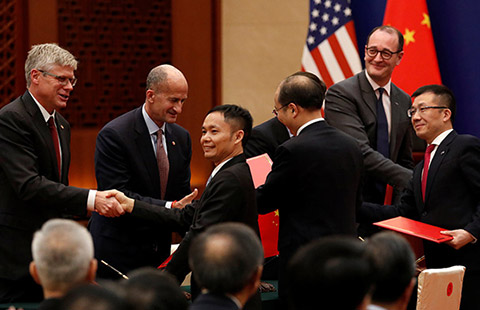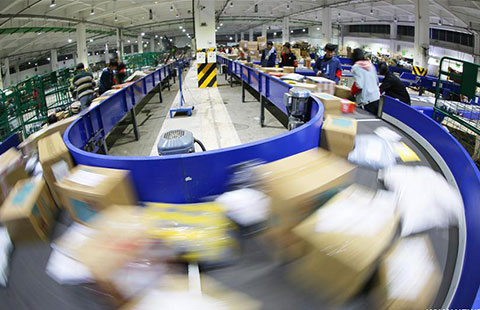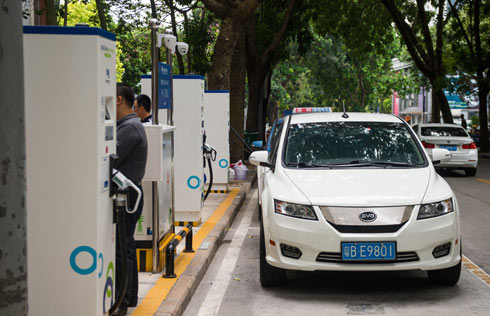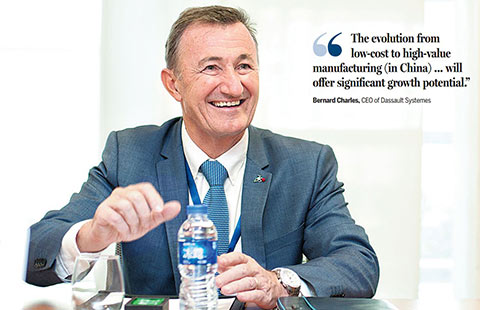Belt and Road Initiative yields great achievements in ASEAN countries: Chinese ambassador
MANILA - Members of the Association of Southeast Asian Nations (ASEAN) are the prior and primary partners of China in promoting the Belt and Road Initiative, Chinese Ambassador to ASEAN Xu Bu told Xinhua in an interview ahead of the 31st ASEAN summit and related meetings from Nov 10 to Nov 14.
ASEAN's development plans, including ASEAN Community Vision 2025, AEC Blueprint 2025 and Master Plan on ASEAN Connectivity 2025, are highly compatible with the objectives of China's Belt and Road Initiative, China and ASEAN have both agreed to integrate and mutually promote the development strategies of both sides, Xu said.
According to him, the Belt and Road Initiative has made remarkable progress and achievements in ASEAN countries in five aspects.
Firstly, with effective policy communication, the Belt and Road Initiative and ASEAN countries are forming a multi-level inter-governmental communication mechanism.
Secondly, the construction of infrastructure interconnectivity has been speeding up along with China's high-speed rail "going out" and a series of flagship projects being implemented.
Thirdly, with the China-ASEAN deal to upgrade their free trade agreement (FTA) formally going into force, the two sides have been closely pushing forward production capacity cooperation with industrial parks as key projects, and rapidly enhancing trade and investment.
Furthermore, the Asian Infrastructure Investment Bank has attracted participation and support of all ASEAN countries, providing a firm guarantee for financial integration.
Besides, with cultural exchanges and tourism as a link, non-governmental contact between the two sides is becoming increasingly active, laying the social foundation for people-to-people bonds.
The Belt and Road Initiative, put forward in 2013, is aimed at building the Silk Road Economic Belt and the 21st Century Maritime Silk Road by promoting trade, financial integration, infrastructure inter-connectivity and people-to-people exchanges among continents.
A recent report by the United Nations Conference on Trade and Development showed that ASEAN would need infrastructure investment of $60 billion to $146 billion per year up until 2025.
China has been providing assistance in railway infrastructure projects to ASEAN countries, including Indonesia, Thailand, Malaysia, Cambodia, the Philippines and Laos. These include Indonesia's Jakarta-Bandung High Speed Rail link, Malaysia's East Coast Rail, China-Thai high speed railway, and China-Laos railway, according to China's National Development and Reform Commission.
Established on Aug 8, 1967, ASEAN groups Brunei, Cambodia, Indonesia, Laos, Malaysia, Myanmar, the Philippines, Singapore, Thailand and Vietnam.
Leaders from the 10 ASEAN member countries and ASEAN dialogue partners gather in Manila from Nov 10 to Nov 14 for the 31st ASEAN summit, the 12th East Asia summit and related meetings. Strengthening Regional integration and global free trade, security issues, among others, will be the major topics.
- Belt and Road Initiative drives cruise tourism to new era
- Women entrepreneurs from China, South Asia discuss ways to explore Belt and Road Initiative opportunities
- Cambodia sees Belt and Road Initiative as key development strategy for trade, investment
- Belt and Road Initiative to provide hard and soft connectivity: Sri Lankan Foreign Minister
- Cuba seeks to increase trade, join China's Belt and Road Initiative: Official
























